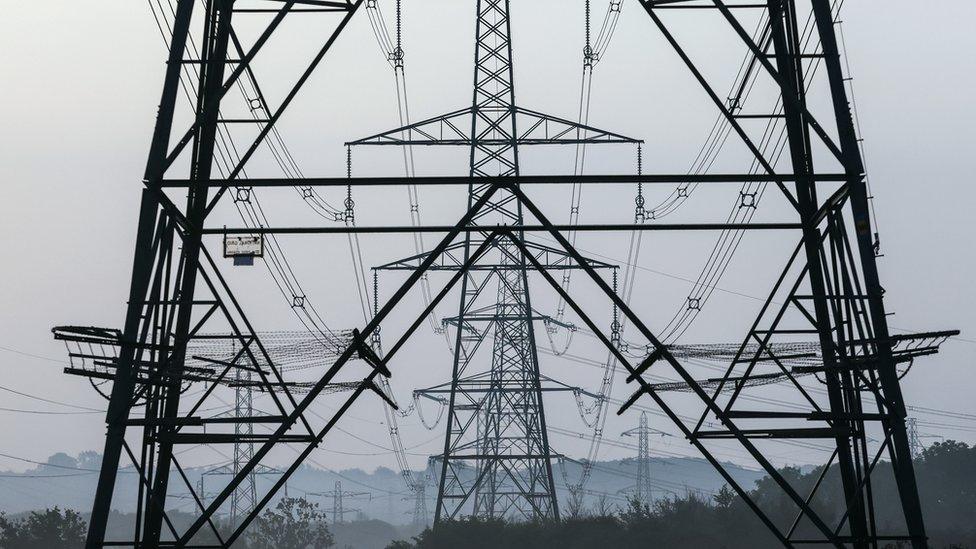Off target: Net zero requires voter support
- Published
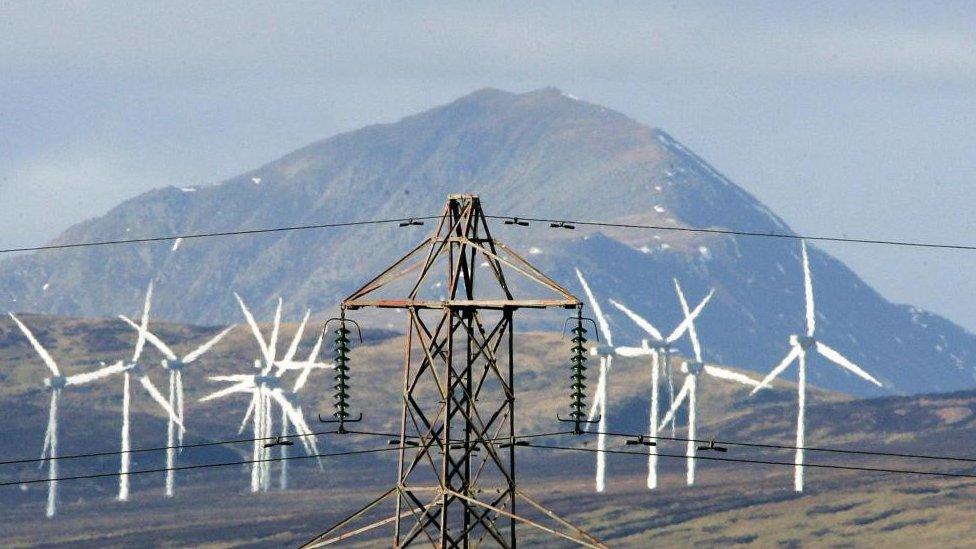
The Scottish government is world-class at setting itself ambitious targets. It's not so good at hitting them.
So it will surprise few people that experts in climate change reckon there is little chance of hitting the emissions reduction targets set for 2030.
Unlike its environment advisers, Scottish ministers have other targets to hit, including electoral ones. They don't want to alienate voters or communities. They want to get economic growth going and improved infrastructure to make that happen.
So they face trade-offs between the emissions targets and, for instance, road building, which is seen as an encouragement to drive more road miles when they're trying to reduce them.
Green lobbyists want to see less spent on roads and more on public transport. But if you say that to those who depend on the A9 road between Perth and Inverness, and numerous local traffic chokepoints around the country, you get a political backlash.
The cabinet secretary responsible for net zero, the wellbeing economy and energy (a department of trade-offs?), Mairi McAllan, told the BBC's Good Morning Scotland programme that more money is needed, for instance to plant trees as a means of capturing carbon.
The blame, again unsurprisingly, is placed on the Treasury in London for stifling that ambition.
So a lot of the failure to hit the emissions reduction target is down to choices being made in Holyrood and in Westminster.
But much of it is also due to the difficulty of taking people and businesses on the net zero journey. That's a challenge for governments around the world, balancing the stick of increased regulation with the carrots of financial incentives for change.
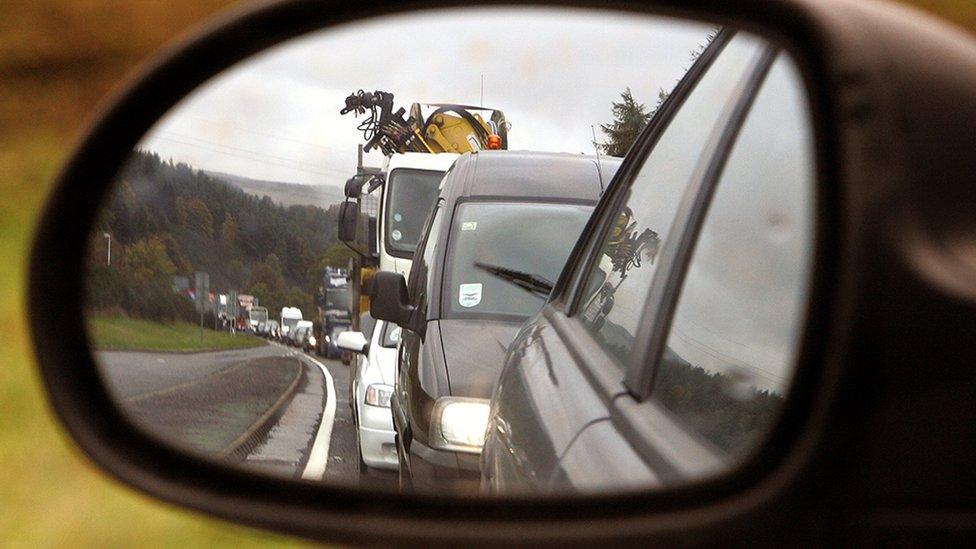
Green lobbyists want less spent on roads like the A9 but cuts to road building risk a political backlash
With the stick comes extra cost, from utility bills to recycling bottles, as well as constraints on individual freedoms. And as many of the easier wins have been secured - closing down coal-burning power stations, for instance - future decisions get tougher and closer to home for the public.
That explains why Rishi Sunak put the brakes on some of his government's targets, including the end of petrol or diesel car sales and the phasing out of new gas heating boilers.
Banning the use of fossil fuels to heat homes is one of the toughest demands of the public. It will require a huge investment by government, to incentivise people into spending their own money on better insulation of homes as well as creating a supply pipeline of attractive alternatives.
As the National Audit Office set out this week in a report on England and Wales, government is nowhere near its ambitions for replacement of gas and oil home heating and Scotland has a similar story to tell.
So far, Westminster funding of its Boiler Upgrade Scheme has achieved less than half its target. With 55,000 heat pumps installed in 2022, the target for 2028 is 600,000 each year and by 2035, it should be at 1.6m annually.
That requires not only more government funds as incentives and match-funding for household investment in new heating, but also a clear pathway to lower bills for those householders.
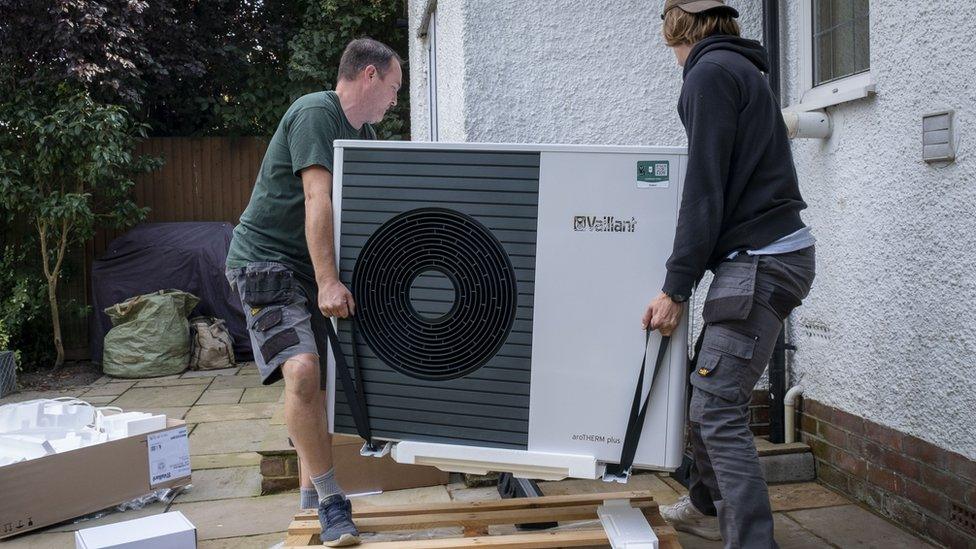
Heat pumps are not being installed as fast as was hoped
That, in turn, requires a challenging decision to skew the costs of greening energy from electricity towards gas. At present, your electricity bill carries green levies for subsidising renewable energy as well as a social levy to help those on low incomes.
The UK government knows that the switch to putting these costs on to gas is necessary, but there is no good time to do it.
A further annual levy is foreseen this week by a very big plan to accelerate the transition of the electricity grid across and around Britain.
With an estimated bill of £58bn, the three companies that run the high-voltage grid, two of them in Scotland, have set out what they think they need to do to ensure that ambitious windfarm plans, most of them off the coast of Scotland, can be linked to the markets where the electricity will be needed.
We already know of the wind farm ambitions, set out in the ScotWind programme of offshore turbines, now churning through the early planning stages and due for installation within a decade.
High voltage links
If they go ahead - and that's not guaranteed unless planning and finances align - these are set to generate far more power than Scotland needs. That means more high-voltage links are required to send it south (and to bring power north when the wind drops) to meet the increasing demand for power to charge batteries and to replace demand for oil and gas.
So in addition to the new grid connections, upgrades and substations being planned to meet demand in 2030, this week's publication sets out as much new capacity again in the years after 2030.
There is a big gain to be had there. The arm of National Grid that co-ordinated this blueprint commissioned an economic study that suggested £15bn of economic value added through the additional investment, translating to 20,000 jobs.
It says around a third of that could be in Scotland. So it's quite a big bonanza.
But it's also a challenge - to be ready for that opportunity with skilled workers, and to handle the planning applications and local opposition that can be expected.
When the high-voltage line was proposed between Beauly in the heart of the Highlands and Denny, near Falkirk, it took 14 years to get through planning and a public inquiry and to get it built, and much of that was on an existing route.
The plans for lines between Caithness and Beauly, between Beauly and Peterhead, and from Peterhead south through the Mearns countryside continue to meet fierce opposition from those who don't like pylons, or the increased number and size of onshore turbines that will be hooked into the cables.
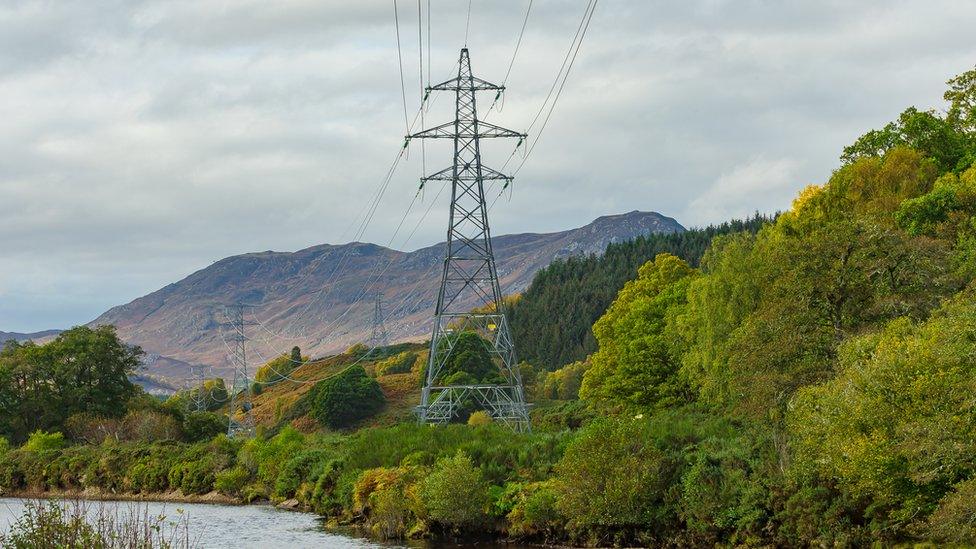
Reconciling the need to provide power with preserving the natural environment is a controversial balancing act
The new map, set out this week, includes a lot more subsea cabling, from wind farms and stretching down the east and west coasts. It also sets out a "spine" for the national grid, with a new line running from Peterhead to the central belt.
It further says two new lines will be needed, south from the central belt to cross the border near Carlisle.
One is set to cut through the border country, the other to run through South Ayrshire and some of the most scenic areas of the south-west uplands. The battle over pylons in the north of Scotland is set to spread, with new lines also for Caithness, while it will surely intensify to the south of Scotland.
Opponents say there must be better ways of reaching net zero, and that the countryside should not have to pay such a high price.
The electricity industry says that such mitigation would come at a much higher price for customers, and is looking to governments, at Holyrood and Westminster, to do more of the explaining to communities why this is part of their green vision for energy.
Net zero is an ambitious target on which most can agree. It's less clear that there will be agreement on how to get there, making it more difficult to reach the destination on schedule.
- Published19 October 2023
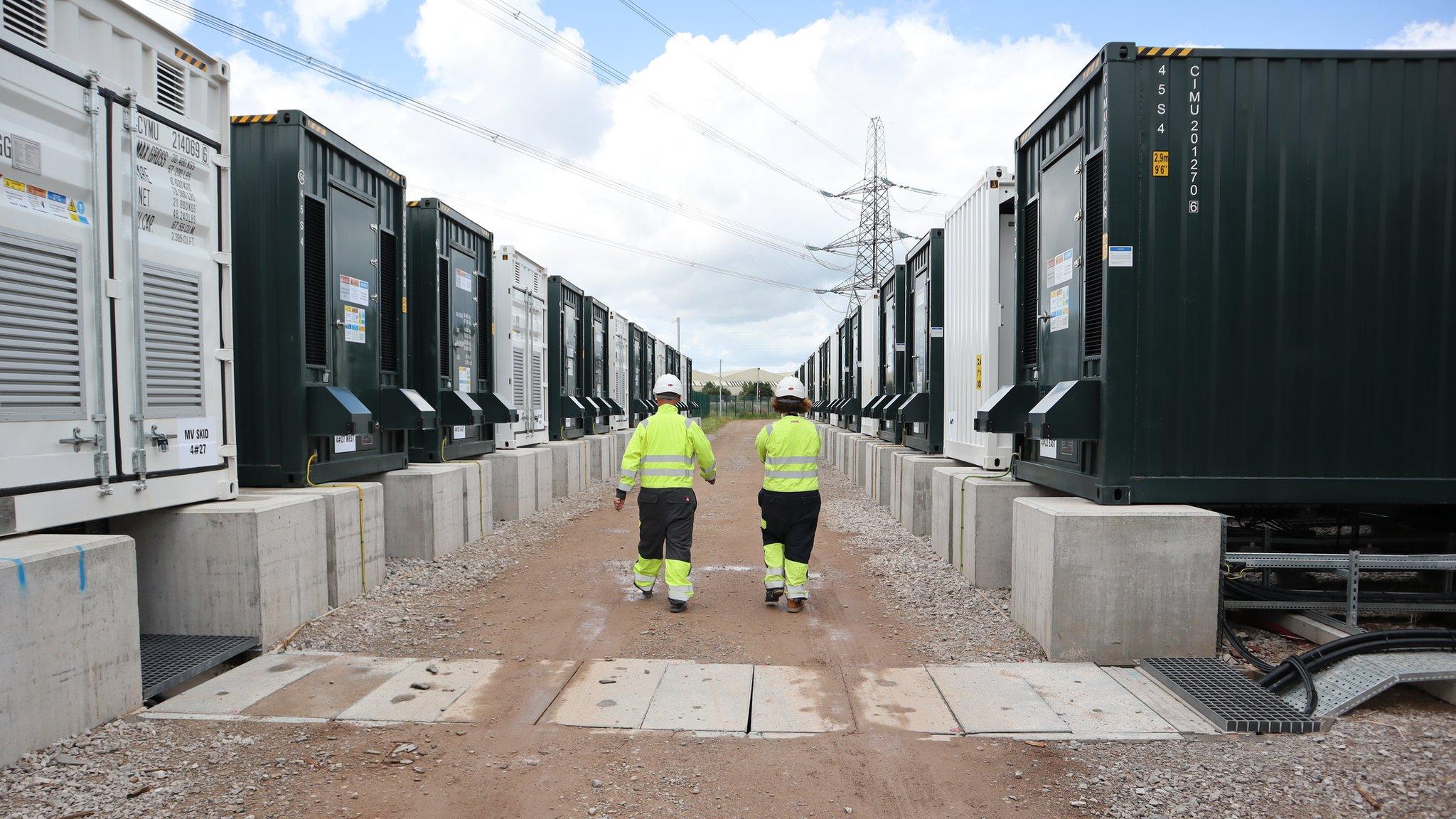
- Published31 July 2023
